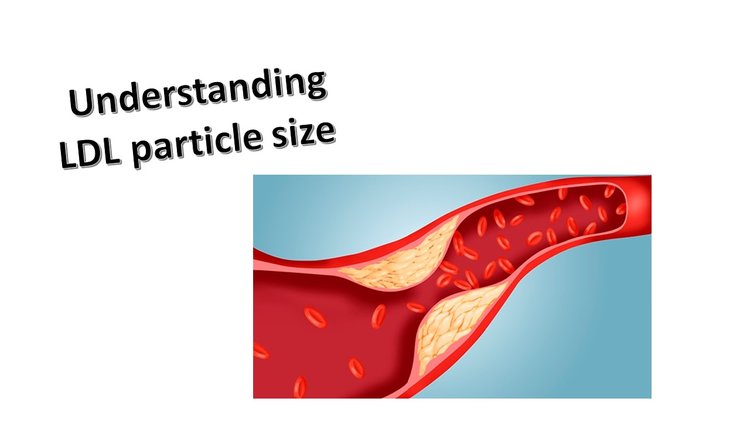Hypercholesterolemia, characterized by elevated levels of cholesterol in the blood, is a significant risk factor for cardiovascular disease.
Understanding who is most likely to develop this condition involves identifying various genetic, lifestyle, and health-related factors that contribute to its onset. This article explores the demographics, genetic predispositions, lifestyle habits, and underlying health conditions that increase the likelihood of developing hypercholesterolemia.
Who Is Most Likely to Develop Hypercholesterolemia?
1. Genetic Predisposition
Genetics play a crucial role in determining an individual’s susceptibility to hypercholesterolemia. Certain genetic variations can affect how cholesterol is metabolized and processed in the body, leading to elevated levels. Familial hypercholesterolemia (FH) is a genetic disorder characterized by high LDL cholesterol levels from birth, significantly increasing the risk of premature cardiovascular disease.
SEE ALSO: What Is The Main Cause of Hypercholesterolemia?
Key Genetic Factors
Familial Hypercholesterolemia (FH): Individuals with FH inherit mutations in genes responsible for cholesterol metabolism, such as LDL receptor (LDLR), apolipoprotein B (APOB), or PCSK9 genes. These mutations impair the body’s ability to remove LDL cholesterol from the bloodstream efficiently.
Polygenic Hypercholesterolemia: Inherited from multiple genes, polygenic hypercholesterolemia contributes to moderately elevated cholesterol levels. Variations in genes related to cholesterol synthesis, transport, and metabolism collectively influence cholesterol levels.
Family History
A strong family history of premature cardiovascular disease or hypercholesterolemia increases the likelihood of developing the condition. Close relatives with early heart attacks or strokes may indicate a genetic predisposition to elevated cholesterol levels and cardiovascular risk.
2. Age and Gender
Age and gender are significant demographic factors influencing the development of hypercholesterolemia. Cholesterol levels tend to increase with age, making older adults more susceptible to elevated LDL cholesterol levels and reduced HDL cholesterol levels.
Age-related Changes
Men: Generally have higher cholesterol levels than women until menopause, after which women’s cholesterol levels may rise.
Women: Cholesterol levels increase after menopause due to hormonal changes, contributing to a higher risk of cardiovascular disease.
Hormonal Influence
Estrogen: Before menopause, estrogen helps maintain favorable cholesterol levels by increasing HDL cholesterol and lowering LDL cholesterol. After menopause, declining estrogen levels can lead to unfavorable lipid profiles.
3. Lifestyle Factors
Unhealthy lifestyle habits significantly contribute to the development of hypercholesterolemia. Poor dietary choices, physical inactivity, and smoking increase cholesterol levels and cardiovascular risk.
Dietary Habits
Saturated and Trans Fats: Found in red meat, full-fat dairy products, and processed foods, saturated and trans fats raise LDL cholesterol levels.
Dietary Cholesterol: Found in animal products, excessive dietary cholesterol intake can contribute to elevated blood cholesterol levels in susceptible individuals.
Refined Carbohydrates: High intake of sugars and refined carbohydrates can lower HDL cholesterol and raise triglyceride levels, contributing to dyslipidemia.
Physical Activity
Sedentary Lifestyle: Lack of regular physical activity contributes to weight gain, reduces HDL cholesterol levels, and increases the risk of developing hypercholesterolemia.
Regular Exercise: Aerobic exercise such as walking, jogging, or swimming can raise HDL cholesterol levels and improve overall cardiovascular health.
Smoking and Alcohol Consumption
Smoking: Tobacco smoke damages blood vessel walls, promotes atherosclerosis, and lowers HDL cholesterol levels.
Alcohol: Excessive alcohol consumption can raise triglyceride levels and contribute to weight gain, adversely affecting lipid profiles.
4. Underlying Health Conditions
Certain medical conditions and health disorders predispose individuals to hypercholesterolemia. Understanding these conditions is crucial for effective management and prevention of cardiovascular disease.
Metabolic Syndrome
Metabolic syndrome is a cluster of conditions including obesity, elevated blood pressure, high blood sugar levels, and abnormal lipid levels (high triglycerides, low HDL cholesterol). Metabolic syndrome significantly increases the risk of cardiovascular disease, including hypercholesterolemia.
Diabetes Mellitus
Type 2 diabetes is associated with insulin resistance and dyslipidemia, characterized by high triglyceride levels, low HDL cholesterol levels, and increased small dense LDL particles. Poorly controlled diabetes accelerates atherosclerosis and increases cardiovascular risk.
High blood pressure damages blood vessel walls and promotes at herosclerosis, increasing the risk of cardiovascular disease and hypercholesterolemia.
Hypothyroidism
Underactive thyroid function (hypothyroidism) can lead to elevated LDL cholesterol levels due to reduced clearance of cholesterol from the bloodstream.
5. Medications and Treatments
Certain medications and medical treatments can affect lipid metabolism and increase the risk of hypercholesterolemia.
Medications Contributing to Dyslipidemia
Diuretics: Some diuretics used to treat hypertension can raise LDL cholesterol and triglyceride levels.
Corticosteroids: Long-term use of corticosteroids can lead to dyslipidemia, including elevated LDL cholesterol and triglyceride levels.
Immunosuppressants: Medications used to suppress the immune system in transplant recipients can alter lipid profiles.
Hormonal Therapies
Oral Contraceptives: Some oral contraceptives can increase LDL cholesterol levels and reduce HDL cholesterol levels, potentially contributing to dyslipidemia in susceptible individuals.
Hormone Replacement Therapy (HRT): Estrogen replacement therapy may improve lipid profiles in postmenopausal women but can also increase cardiovascular risk in certain individuals.
Conclusion
Hypercholesterolemia is a complex condition influenced by a combination of genetic predisposition, demographic factors, lifestyle habits, underlying health conditions, and medications. Individuals with a family history of premature cardiovascular disease, genetic mutations affecting cholesterol metabolism, unhealthy lifestyle habits (such as poor diet and lack of exercise), and certain medical conditions (including metabolic syndrome and diabetes) are most likely to develop elevated cholesterol levels and subsequent cardiovascular risk.

